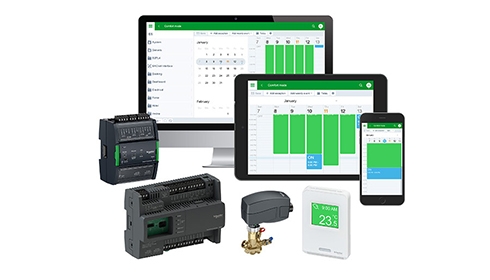Constantly improving the way buildings are operated and managed, building automation is the centralized automatic control of a building’s systems through the networking of electronic devices.
Building automation is commonly used to control systems that impact occupant comfort and experience, whether it be traditional HVAC mechanical systems with equipment like chillers and rooftop units, or historically segregated ones like lighting and power. The list of possible integrations includes technologies like closed-circuit TV security cameras, security card access systems, emergency lighting, and elevator dispatch.
Building owners and operators make investments in building automation for several reasons:
1. Occupant experience:
An ideal temperature and adequate lighting are crucial components for improving the occupant experience. With modern building automation, employees can maintain their optimal space temperature and lighting levels while working early in the morning or late into the evening. The satisfaction that comes from this level of personalization leads to improvements in important metrics like employee recruitment and tenant retention. Aptly named “smart” buildings, which provide the highest levels of connectivity and occupant experience, have been shown to yield 6% higher rental values and produce a 15% premium for sale in the market.
2. Energy efficiency:
Building automation provides greater control over systems, giving operators the ability to measure, analyze and take action to increase energy efficiency and lower costs. For example, occupancy sensors connected to a building automation system (BAS) can detect if everyone has gone home for the day. As a result, the BAS can then dim the lights and command the mechanical system into nighttime setback mode, thus adjusting the temperature and lighting to save energy through both systems.
3. Operational efficiency:
Connections to analytics platforms, such as automated fault detection and diagnostics (AFDD), enable operators to better predict future system performance and perform dynamic, condition-based maintenance. By becoming more proactive regarding potential maintenance issues, operators can reduce unplanned equipment downtime and better plan their work instead of reacting to alarms and dealing with unexpected issues.
4. Precise control:
Facilities such as hospitals and data centers often require precise temperature and humidity control with no tolerance for system variability or downtime. Automation can be used to maintain consistent temperature, appropriate lighting and contaminant-free ventilation in spaces like operating rooms, laboratories or other critical facilities.
5. Physical security:
Automation can maximize an operations staff’s ability to handle emergencies, react to alarms, and protect a facility and its occupants from unwanted external access. As one example, in the event of an intrusion alarm, an access control system can lock specific interior doors to stop a violator’s progress short of critical areas.
Every building can benefit from building automation in one form or fashion. Whether it’s through collecting and using data or refining the systems, operators and facility managers can reduce costs, increase efficiency, and create a better suited environment for the building’s occupants.
Read more like this ...



